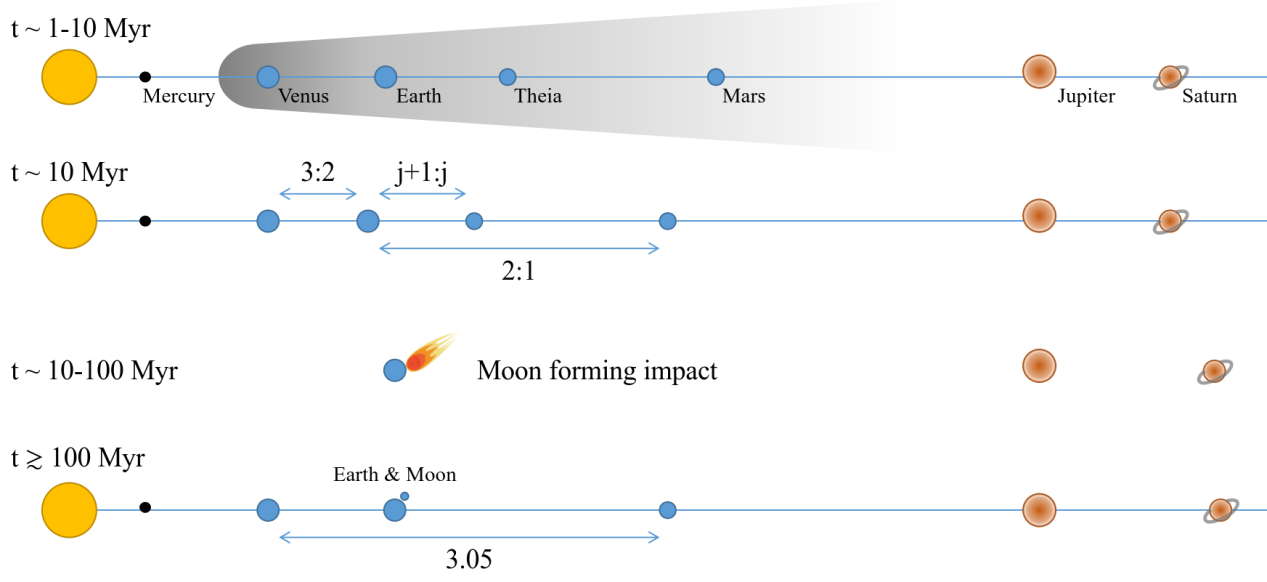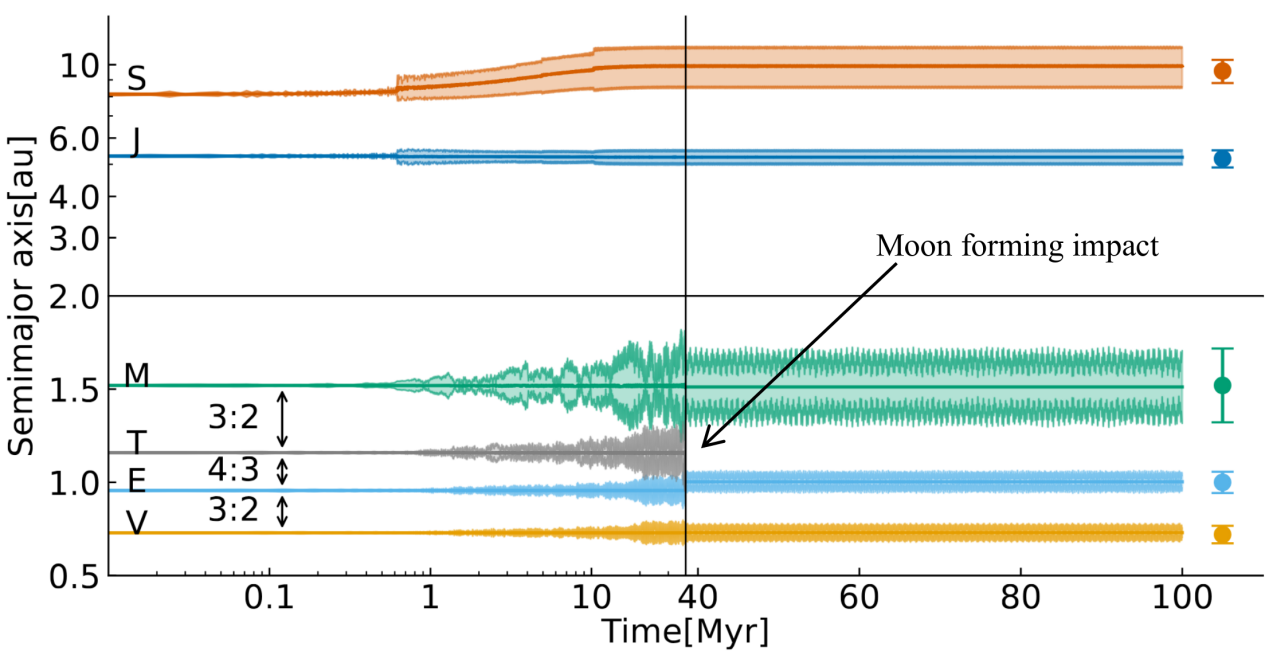Traditionally, models have proposed that Earth and its rocky neighbors formed gradually, through a series of chaotic collisions between Mars-size bodies and planetesimals, after the Solar System’s gas disk had dispersed. Recent observations of young exoplanets suggest a different story: many planets form early, while still embedded in their young gas disks. Due to orbital migration, proto-planets often end up in resonances where their orbits fall into simple, near-integer ratios. Such configuration is dynamically stable. Similar orbital resonances are still visible today among Jupiter’s Galilean moons. The famous exoplanet system TRAPPIST-1 also harbours a long resonance chain involving seven planets.

fig. 1 Sketch of the evolution of planets in our solar system since their birth. The two-headed arrows indicate the period ratio between the end planet and the start planet.
A research team involving scientists from Tsinghua University, Leiden University, and the National Astronomical Observatory of Japan (NAOJ), recently investigated a scenario where the terrestrial planets in our Solar System formed early in its history. Their simulations suggest that the planets -- including the Moon-forming impactor Theia -- were once locked in a resonant chain during the lifetime of the Solar nebula.
However, Jupiter and the other gas giants destabilized the inner system (See figure 1 and 2), resulting in a collision between Theia and Earth between 10 to 100 Myr to form the current Earth-Moon system. The Moon forming impact appears to be quite common, in 20-50% of our simulations dependent on the initial architecture. The researchers found that the resulting planetary orbits closely match the current configuration, and the timing of the Moon-forming event aligns well with isotopic dating. Notably, the present-day 3.05 period ratio between Mars and Venus is an imprint of the broken resonance chain. Unlike traditional models that require many giant impacts and artificial damping to calm the planet orbits, this new scenario involves just one major collision -- the one that formed the Moon. As a result, the planet orbits emerge dynamically stable and less chaotic.
One prediction from the study is that Venus’s mantle may still preserve its original, primordial composition. Future sample-return missions to Venus could test the new scenario by analyzing isotopic signatures.Looking ahead, the team hopes to use this dynamical model to explain many exoplanet systems devoid of evolved inner resonance chain. Observations already suggest that young exoplanets often form in resonances, which may later break apart -- just like the inner Solar System did. If so, our Solar System may not be so special after all.

fig. 2 Evolution of Venus, Earth, Theia and Mars in one of our simulated Solar system. The right error bar represent the semi-major axis (center), aphelion (upper), and perihelion (lower) of the current solar system planets during secular evolution.
The research has been accepted for publication in The Astrophysical Journal (ApJ). The project was led by Shuo Huang, a joint-PhD student at Tsinghua University and Leiden University, with coauthors Chris Ormel (Tsinghua University), Simon Portegies Zwart (Leiden University), Eiichiro Kokubo (NAOJ), and Tian Yi (PhD, Tsinghua University).
Paper link: https://arxiv.org/abs/2506.04164

